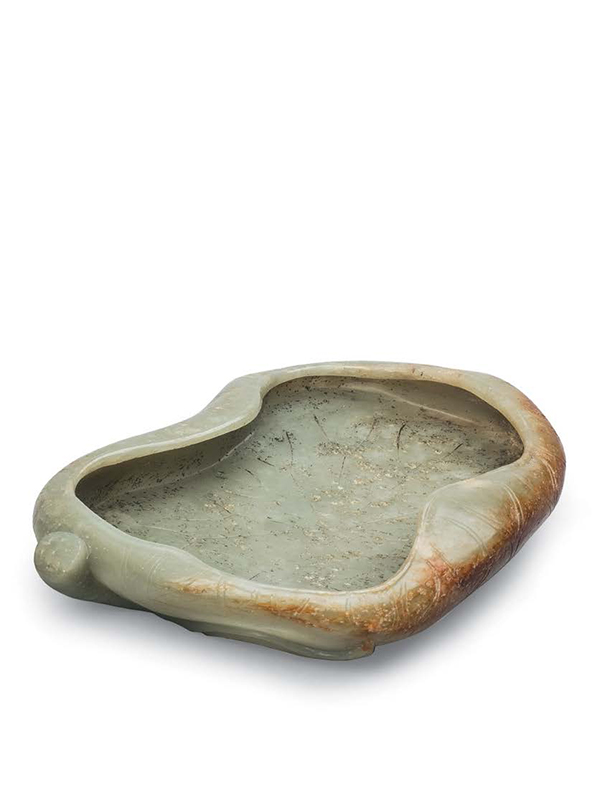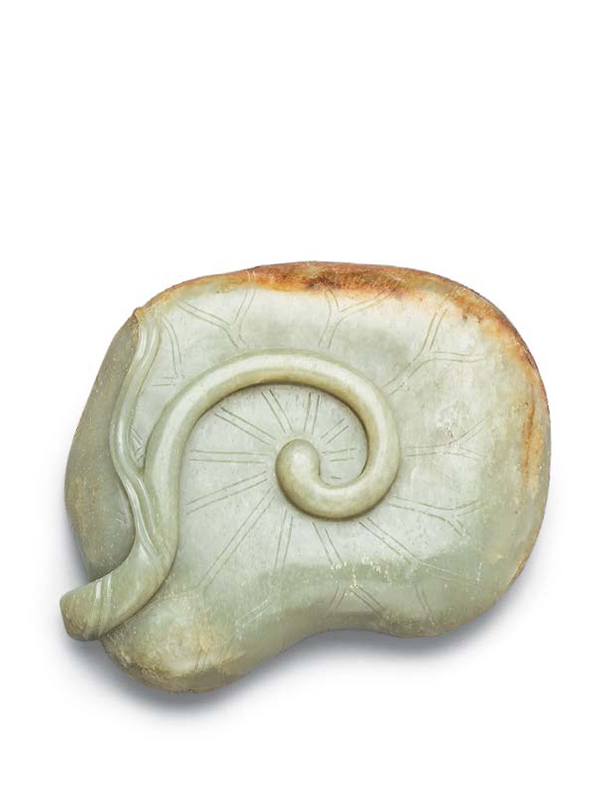Jade brush washer
A nephrite brush washer carved in the form of an irregular, naturalistically depicted lotus leaf, the edges curled inwards and the base formed by its twisted stalk from which emanates a single leaf. The outside of the vessel is engraved in imitation of the natural veining of the leaf, as is the interior. The stone is of predominantly pale green tone with extensive russet markings from the skin still visible to one side.
Shallow receptacles filled with water for washing a brush after painting are typical accoutrements of the scholar’s desk and exist in a variety of different materials and forms. This brush washer, carved from a piece of jade with skilful and naturalistic depiction of a lotus leaf, fits perfectly into the general spirit of the Ming dynasty literati, who would have appreciated the visual pleasure its utter simplicity affords the viewer. It is also worth noting that in Daoist symbolism the lotus leaf (heye) signifies longevity, a pun that would not have been lost on the scholar.[1] A closely comparable Ming dynasty jade brush-washer in the form of a lotus leaf, also retaining the shape of the original pebble from which it was carved, was formerly in the collection of Gerald Godfrey and was included in the exhibition Chinese Jade, The Image from Within at the Pacific Asia Museum in Pasadena, California in 1986.[2] Another naturalistically rendered jade lotus leaf brush-washer is illustrated by Keverne.[3]
Provenance: private collection, Europe
- Tse Bartholomew, T. Hidden Meanings in Chinese Art, Asian Art Museum, San Francisco, 2006, 2.16.1, p. 48
- Foster, S.H. Chinese Jade, The Image from Within, Pacific Asia Museum, Pasadena, California 1986, no. 96, pp. 55 and 67
- Keverne, R. ed. Jade, Anness Publishing, London 1991, figs. 39 and 40, p. 144
荷葉青玉筆洗
明 1368 – 1644 長:12.7 公分 高:2.5 公分
青玉筆洗,整塊玉石雕出荷葉鋪展樣貌,下連荷莖,側雕一小型蓮蓬,內外側均淺刻荷葉脈絡。玉質
青灰色澤,兼有褐斑。筆洗為文房必需品,以整塊青玉雕琢荷葉形,顯示原擁有者之身份地位及其孺
慕自然之情。
來源:歐洲私人收藏


